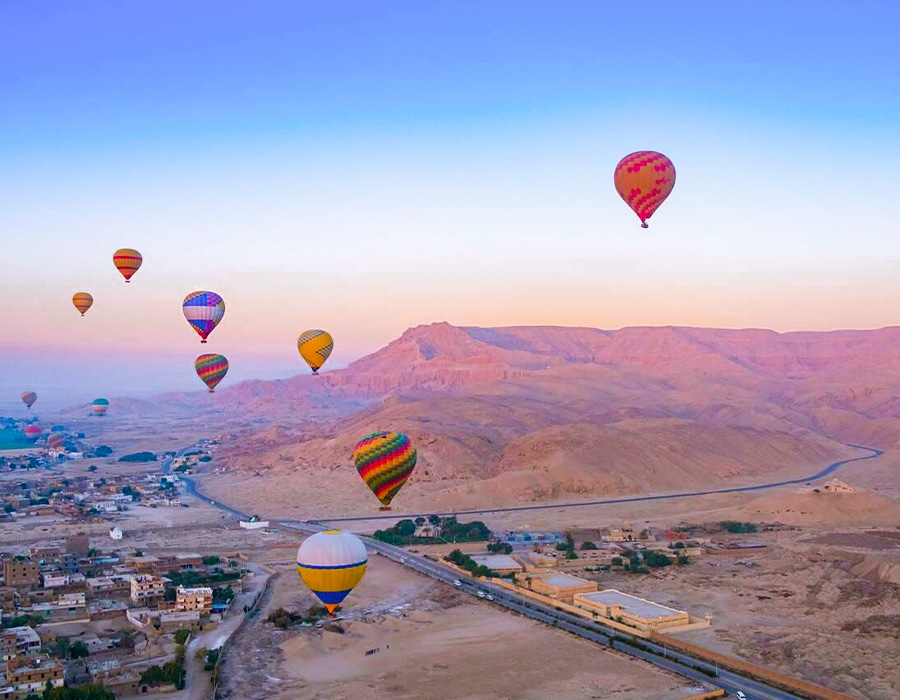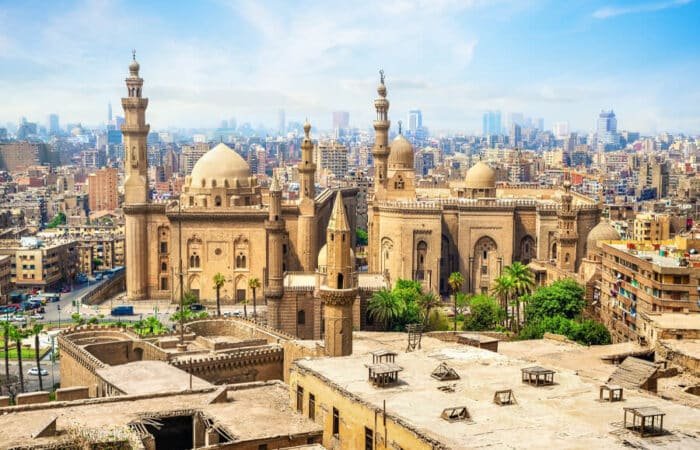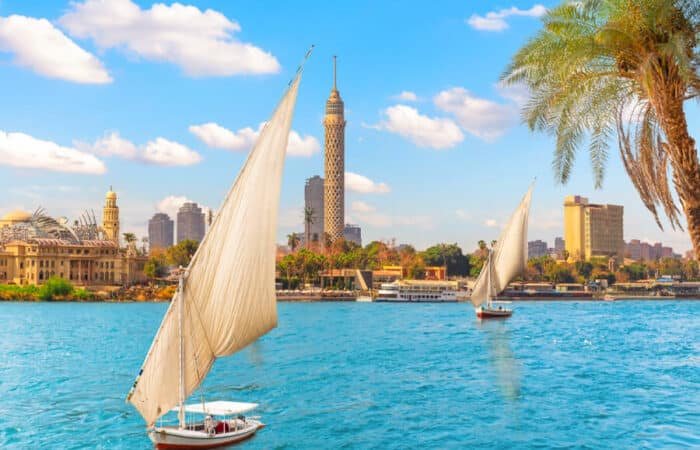Have you ever dreamed of walking among the majestic remains of an ancient civilization? The West Bank of Luxor, Egypt, is a treasure trove of history, offering some of the most awe-inspiring archaeological sites in the world. But do you know how to plan the perfect visit to this timeless destination? From the Valley of the Kings to the enchanting temples, let’s uncover the secrets of the West Bank and why it’s a must-visit for history enthusiasts and travelers alike.
Key Takeaways:
- The West Bank of Luxor, Egypt, is home to iconic archaeological sites, including the Valley of the Kings and the Temple of Hatshepsut.
- Visitors can explore the rich cultural heritage and marvel at ancient tombs, temples, and monuments.
- Tips for planning a visit include the best times to go, guided tours, and transportation options.
- Learn about the significance of each site, from pharaohs’ tombs to daily life in ancient Egypt.
- The West Bank offers unique experiences for history enthusiasts, photographers, and adventure seekers.
Top Luxor City Tours Led by “Egypt Tours with Locals”:
| Package | Duration | Price (USD) |
|---|---|---|
| Luxor Full-Day Tour to Visit West & East Banks | 8 Hours | $90 |
| Hot Air Balloon Tour in Luxor | 2 Hours | $90 |
| 4 Nights Nile Cruise From Luxor To Aswan | 4 Nights | $700 |
| 5 Day Cairo and Luxor Tour Package | 5 Days | $760 |
What Is the West Bank of Luxor?
The West Bank of Luxor isn’t just another tourist destination—it’s like stepping into a time machine that takes you back thousands of years. This area, located just across the Nile River from modern-day Luxor, was once the necropolis of ancient Thebes. In simpler terms? It’s a massive “City of the Dead,” where pharaohs and nobles were laid to rest in tombs designed to last for eternity. Pretty poetic, right?
But why the West Bank? Well, in ancient Egyptian belief, the West symbolized death because that’s where the sun sets. Combine that with the area’s rocky cliffs and desert terrain—perfect for carving out tombs—and you’ve got the ultimate resting place for royalty. The location also aligned with Egyptian mythology, specifically their connection to Hathor, the goddess of motherhood and rebirth. It’s fascinating how deeply their beliefs influenced everything, even where they buried their dead.
Some of the biggest names in Egyptian history are buried here and ever heard of the Valley of the Kings? That’s where legendary pharaohs like Tutankhamun and Ramses II were entombed. You’ve also got the Tombs of the Nobles, which are smaller but equally stunning, with intricate paintings that show everyday ancient Egyptian life scenes. These tombs are like snapshots of history—colorful, detailed, and surprisingly relatable.
The West Bank isn’t just tombs, though. It’s home to jaw-dropping temples like the Mortuary Temple of Hatshepsut at Deir el-Bahari, carved right into the cliffs. There’s also the Colossi of Memnon, two massive statues that have stood watch for thousands of years. Fun fact: These statues were once part of a larger temple complex, but most of it was destroyed by time and floods.
If you’re a fan of history, architecture, or just jaw-dropping sights, the West Bank of Luxor is a must-visit. It’s like walking into the pages of an ancient history book—but better, because you can touch the stones (well, some of them). So pack your sense of wonder—you’re going to need it!

History of the West Bank of Luxor
The West Bank of Luxor has a history as rich and layered as the sands it sits on. Back in the days of ancient Egypt—roughly between 1550 and 1070 BCE during the New Kingdom period—this area became the ultimate burial ground for pharaohs, queens, and nobles. Why? Because the West Bank was considered sacred ground. It was tied to their beliefs about the afterlife, symbolizing death and rebirth thanks to its location where the sun sets.
Pharaohs weren’t messing around when it came to preparing for the afterlife. The Valley of the Kings, now one of the most famous archaeological sites in the world, was the go-to spot for royal burials. Instead of building giant pyramids (which tended to scream, “Hey, grave robbers, over here!”), they opted for hidden tombs dug deep into the Theban hills. This shift was partly strategic—fewer flashy landmarks meant fewer thefts, although plenty of tombs were still looted over time.
Meanwhile, other parts of the West Bank were bustling with activity. For instance, the workers’ village at Deir el-Medina housed the skilled laborers and artisans responsible for creating these magnificent tombs. These weren’t just any workers—they were master craftsmen who lived in a tightly organized community, leaving behind graffiti and personal artifacts that offer a rare glimpse into their lives.
Then there are the temples. Oh, the temples! The Mortuary Temple of Hatshepsut, with its dramatic terraces and towering columns, was built for one of Egypt’s most remarkable rulers—a female pharaoh who broke all kinds of boundaries. The Ramesseum, constructed by Ramses II, was another stunner, though much of it has crumbled under the weight of time.
The West Bank wasn’t just about the afterlife; it was also a hub of religious and political power. The temples here weren’t merely monuments; they were active centers of worship and governance. As dynasties rose and fell, the West Bank remained a focal point of Egyptian culture, a testament to their obsession with the eternal.
Today, these ancient sites are a time capsule of human ambition, spirituality, and creativity. Walking through the West Bank of Luxor, you’re not just exploring ruins—you’re stepping into a world where gods, kings, and craftsmen all left their mark. It’s history you can feel in the air.

Top Attractions on the West Bank of Luxor
The West Bank of Luxor is a treasure trove of ancient wonders, offering some of the most iconic sites in Egyptian history. From royal tombs to grand temples, this area is packed with must-see attractions that will leave you in awe. Here’s your guide to the highlights you absolutely can’t miss.
1- Valley of the Kings
No visit to the West Bank is complete without exploring the Valley of the Kings, a burial ground for pharaohs of the New Kingdom. This is where you’ll find the famous tomb of Tutankhamun, alongside dozens of other elaborately decorated tombs belonging to rulers like Ramses II and Seti I. The intricate wall paintings here depict scenes of the afterlife, and some of them still retain their vibrant colors after thousands of years. Pro tip: Not all tombs are open to the public at once, so check which ones are accessible during your visit.
2- Deir el-Bahari (Hatshepsut’s Temple)
This stunning mortuary temple dedicated to Queen Hatshepsut is a marvel of ancient architecture. Built into the cliffs, its terraces and colonnades are breathtaking to behold. Hatshepsut, one of Egypt’s few female pharaohs, left behind a legacy of power and innovation, and her temple stands as a testament to her reign. Don’t forget to explore the detailed reliefs that tell stories of her divine birth and trading expeditions.

3- Colossi of Memnon
Standing guard at the entrance to the West Bank, the Colossi of Memnon are two massive statues of Pharaoh Amenhotep III. At nearly 60 feet tall, these faceless giants are an imposing sight. While much of the original temple they belonged to has been lost, these statues have survived millennia of floods and earthquakes. Fun fact: Ancient travelers believed one of the statues “sang” at sunrise due to a phenomenon caused by wind and cracks in the stone.
4- Tombs of the Nobles
If you want a more personal glimpse into ancient Egyptian life, the Tombs of the Nobles are a hidden gem. These smaller, less-crowded tombs were built for high-ranking officials and feature vivid scenes of daily life, from farming to banquets. The artwork here is astonishingly well-preserved and offers a more intimate look at the lives of those who served the pharaohs.
5- Medinet Habu (Temple of Ramses III)
This massive temple complex is often overlooked but shouldn’t be. The Temple of Ramses III is known for its towering walls covered in some of the best-preserved hieroglyphs and reliefs in Egypt. The depictions of battles and rituals here give incredible insights into Ramses III’s reign. Plus, it’s usually less crowded than the more famous sites, so you can soak in the history without the hustle.
6- Deir el-Medina (Workers’ Village)
Ever wonder who built all these grand tombs and temples? Visit Deir el-Medina, the village where the artisans and workers lived. This site includes the remains of their homes and tombs, giving a unique perspective on the daily lives of those who created these masterpieces. The tombs of the workers, though smaller, are beautifully decorated and often tell personal stories.
7- Ramesseum
Known as the “Temple of Millions of Years”, this mortuary temple was built by Ramses II, one of Egypt’s most famous pharaohs. Although much of it lies in ruins, the sheer scale of the structure is enough to impress. Look out for the fallen statue of Ramses II—it was once a single colossal piece of stone.

Things to Do on the West Bank of Luxor
The West Bank of Luxor isn’t just about exploring ancient tombs and temples—it’s a destination packed with activities that allow you to truly immerse yourself in the history, culture, and charm of this fascinating region. Whether you’re a history buff or an adventure seeker, here are some of the best things to do in Luxor West Bank.
1. Explore the Ancient Sites
Start your day by visiting the Valley of the Kings, the final resting place of Egypt’s most famous pharaohs. Follow it up with a trip to Hatshepsut’s Temple at Deir el-Bahari, where the grandeur of ancient architecture comes to life. Don’t miss the Colossi of Memnon, standing tall as silent sentinels of the past. If you’ve got extra time, venture into the Tombs of the Nobles for a more intimate look at ancient Egyptian life, or head to Medinet Habu, Ramses III’s majestic temple.
2. Take a Hot Air Balloon Ride
Few experiences can compare to fly over the West Bank of Luxor at sunrise. A hot air balloon ride offers breathtaking views of the desert, lush fields along the Nile, and iconic sites like the Valley of the Kings from above. It’s a serene and unforgettable way to start your day—don’t forget your camera! Check out our Hot Air Balloon Tour in Luxor.
3. Visit the Workmen’s Village at Deir el-Medina
For a different perspective, explore the village of the workers who built the royal tombs. At Deir el-Medina, you can see their homes and beautifully painted tombs, which often depict their personal lives and beliefs. It’s a rare glimpse into the lives of the craftsmen behind the grandeur.
4. Wander Local Markets and Bazaars
If you’re up for some shopping, the local markets on the West Bank are filled with unique finds. Pick up alabaster statues, handwoven rugs, or fragrant Egyptian perfumes. Bargaining is part of the fun, so don’t shy away from negotiating for the best deal. You can check out our guide on what to buy in Egypt if this is your first visit.
5. Try Egyptian Cuisine
Refuel at one of the local restaurants or cafés. Many places serve up delicious Egyptian food like koshari, falafel, and freshly baked bread. Eating on the West Bank often feels more laid-back and authentic compared to the East Bank’s busier tourist hubs.
6. Enjoy a Sunset by the Nile
End your day with a peaceful moment by the river. The West Bank’s sunsets are magical, with the golden light reflecting off the Nile and the surrounding mountains. It’s the perfect way to unwind and soak in the beauty of Luxor.
Practical Information for Visiting the West Bank of Luxor
Planning a trip to the West Bank of Luxor? Here’s everything you need to know to make your visit smooth and stress-free. From transportation tickets, this guide will help you get the most out of your journey into ancient history.
Tickets and Entrance Fees
Most major sites on the West Bank, like the Valley of the Kings and Hatshepsut’s Temple, require individual entrance tickets. Prices range from EGP 220 to 740 per site, depending on the location and its popularity. Some tombs, like Tutankhamun’s, have a separate ticket that costs extra. If you’re planning to visit several sites, consider purchasing the Luxor Pass, which grants access to almost all West Bank (and East Bank) attractions.
Pro tip: Students with valid IDs can often get 50% discounts at most sites!
Best Time to Visit
Luxor is hot—hot. The best time to visit is during the cooler months from November to February when temperatures are more manageable. Arrive early in the morning (around 7 AM) to avoid the midday heat and crowds.
What to Bring
- Comfortable Shoes: You’ll be walking on sand and uneven terrain.
- Sunscreen and a Hat: The Egyptian sun is no joke.
- Plenty of Water: While some sites have vendors, it’s better to bring your own.
- Small Bills: Helpful for tips and small purchases at local shops.
- A Camera or Phone: Most sites allow photography, but some require a small fee for photo permits.
Dining Options
Several small restaurants and cafés near the main tourist sites serve authentic Egyptian food. You’ll find everything from hearty falafel sandwiches to freshly squeezed sugarcane juice. Prices are reasonable, and the laid-back vibe of the West Bank makes dining here feel less touristy than on the East Bank.
Staying Safe While Visiting the West Bank of Luxor
Visiting the West Bank of Luxor is an unforgettable experience, but a little preparation can go a long way in keeping you safe and healthy during your trip. From navigating the intense Egyptian sun to staying aware of your surroundings, here’s everything you need to know to make your visit worry-free.
1. Beat the Heat
The Egyptian sun is no joke, especially if you’re visiting during the warmer months (March–October). Temperatures can soar well over 100°F (40°C), so it’s crucial to stay hydrated. Bring plenty of water bottles (buy them in town—they’re cheaper), wear a wide-brimmed hat, and slather on sunscreen throughout the day. Try to plan your visits for the early morning or late afternoon to avoid the worst of the heat. Many sites also have shaded areas where you can take breaks.
2. Wear Comfortable Clothing and Shoes
The terrain on the West Bank is a mix of desert sand, rocky paths, and temple steps. Sturdy, comfortable shoes are a must to prevent slips and sore feet. Loose, light-colored clothing made from breathable fabrics like cotton is your best bet for staying cool. Women may want to dress modestly to respect local customs, especially in rural areas.
3. Watch Your Belongings
The West Bank is generally safe for tourists, but petty theft can happen in crowded areas like ferry docks or markets. Keep your valuables close—use a crossbody bag or a money belt if you’re carrying cash and passports. Avoid flashing expensive jewelry or electronics, as this could attract unwanted attention.
4. Be Mindful of Scams and Touts
It’s common to encounter enthusiastic locals offering “special deals” on tours, souvenirs, or transportation. While many are genuinely helpful, others might inflate prices or pressure you into buying. Always agree on prices beforehand for taxis, guides, and even camels or donkeys! Politely but firmly decline offers you’re not interested in—”La, shukran” (No, thank you) works wonders.
5. Stay Hydrated and Eat Safely
Stick to bottled water for drinking, and avoid ice in drinks unless you’re sure it’s made with purified water. When it comes to food, eating at popular or well-reviewed restaurants is a safer bet than street food. If you have a sensitive stomach, consider packing anti-diarrheal medicine just in case.
6. Respect Local Customs
The West Bank is home to both ancient wonders and modern communities. Be respectful of local traditions—avoid public displays of affection, and ask permission before taking photos of people or their homes. Being polite and mindful goes a long way in making your visit smooth and enjoyable.

How to Get to the West Bank of Luxor
Getting to the West Bank of Luxor is an adventure in itself, and there are plenty of options depending on your style and budget. Whether you’re flying in, hopping across the Nile, or cruising by car, the journey is as much a part of the experience as the destination.
By Air
If you’re coming from afar, your best bet is flying into Luxor International Airport. It’s located on the East Bank, just a short drive from the Nile. Once you land, you’ll find plenty of taxis and private shuttles ready to whisk you over to the West Bank.
Pro tip: Negotiate the fare upfront or ask your hotel to arrange a ride to avoid paying over the odds.
By Road
For those who like to stick to the ground, there’s a bridge south of Luxor that connects the East and West Banks by road. It’s not the quickest option, but it’s perfect if you’re traveling in a rental car or as part of a larger tour. Plus, the scenic drive along the Nile is worth the extra time.
Getting Around the West Bank
Once you’ve arrived, you’ll need a way to explore all the amazing sites. Taxis and private cars are the most convenient options, especially if you plan to hit multiple spots like the Valley of the Kings and Hatshepsut’s Temple in one day. Many travelers also opt for guided tours, which include transportation and detailed insights into each site. Feeling adventurous? You can even rent a bike or ride a donkey—yes, a donkey!—to some of the nearby attractions.
No matter how you get there, the journey to the West Bank of Luxor is part of the charm. From the moment you cross the Nile, you’ll feel like you’re leaving the modern world behind and stepping into ancient history. Just don’t forget your camera—you’re going to need it!
Conclusion of West Bank of Luxor
The West Bank of Luxor Egypt, is more than just a destination—it’s a journey into the heart of ancient history and culture. From majestic tombs to intricate temples, this UNESCO site offers an unforgettable experience. Whether you’re marveling at the architectural wonders or exploring vibrant markets, every corner of the West Bank tells a story. Plan your trip now, and let the magic of Luxor transport you to another era. Don’t wait—start your adventure today!
Don’t miss to check:


















